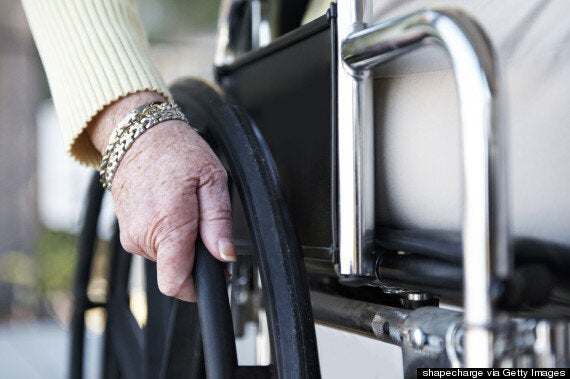Despite the fact that there are around 5,000 people living with Motor Neurone Disease (MND) in the UK at any one time, it is still a relatively unknown disease.
That's why Motor Neurone Disease Awareness Month aims to raise awareness about the condition.
Belinda Cupid, director of research at UK-based Motor Neurone Disease Association (MND Association), was able to shed some light on the condition.
MND is a fatal, rapidly progressive disease that affects the brain and spinal cord. It affects the nerves that control the body's movement, it can affect arms and legs, speech and swallowing, or ability to breathe.

"Normally, the trigger for movement begins in the brain’s motor cortex," Belinda explains. "This transmits signals down the spine to the relevant area - whether to the nerves in the hands or the feet. The nerves carrying these messages are motor neurones and with MND these systems and nerve pathways become damaged."
“Think of motor neurones like domestic wiring," she adds. "Developing MND is like pulling the plug out of the wall - once the connection is lost, you can’t control the muscle anymore.”
There is currently no cure for MND.
The condition kills five people every day in the UK, half within 14 months of diagnosis, and can affect up to 5,000 adults at any one time.
The disease affects people from all communities, but most people are diagnosed over 40 and it tends to affect more men than women.
As mentioned, symptoms can manifest in a number of ways. Some will experience slurred speech while others will find they start to drag their feet.
Common symptoms and effects of MND include:
- Pain and discomfort
- Muscle cramps and spasms
- Stiff joints
- Incontinence
- Bowel problems
- Speech and communication issues
- Eating and drinking difficulties
- Saliva and mucous
- Coughing and a feeling of choking
- Breathing
- Cognitive changes
ALS is the most common form of Motor Neurone Disease (MND), counting for about 80% of total cases. To confuse things, in the US Motor Neurone Disease is known as ALS, but in the UK we stick to the umbrella term, MND.
Unless you were living under a rock last summer, you'll have certainly heard of the #icebucketchallenge - the social media trend where participants filmed themselves throwing a bucket of ice-cold water over their head and posted the video online, nominating others to do the same.
While some were just doing it just for kicks (yes, really), others used the opportunity to raise money and awareness for worthy causes, including the Motor Neurone Disease Association.
ALS has both upper and lower motor neurone involvement and is characterised by weakness and wasting in the limbs. Someone may notice they are tripping when walking or dropping things.
The average life expectancy for someone with ALS is from two to five years from onset of symptoms.
But while there may be no cure for MND or ALS, Belinda says that more could be done to help improve patients quality of life.
"Aside from there being no cure, there is also no diagnostic test for MND. This means that people may wait months to find out what is wrong with them. Due to the very rapid nature of MND this means it is vital that patients need care in a range of areas - they will need to see speech therapists, physiotherapists, respiratory experts," she says. "At the moment patients are expected to travel from clinic to clinic - and their lives get overrun by MND.
"We need more co-ordinated care in multi-discplinary clinics. Studies have shown that this improves quality of life and life expectancy."
For more detail visit the MND Association website